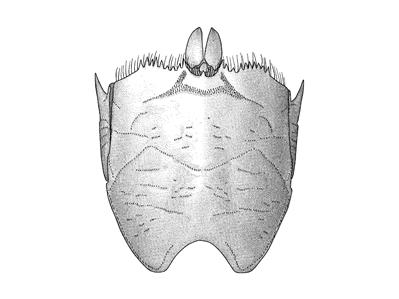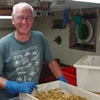Other Names
- Sand Crab
General Description
Carapace wider than long, covered with lightly setose grooves. Anterior margin with 8-11 spines on either side of ocular sinus. Last segment (dactylus) of second walking leg (pereopod 3) heel acute. Male tailfan (telson) ovate, indented at tip, lateral margins straight. Carapace up to 1.7 cm long.
Biology
Albuneids, sand crabs, burrow deeply in sand and are therefore rarely taken. It has been suggested that species of the genus Albunea are filter feeders, collecting suspended food particles with the long first antennae but this theory has been discredited by others proposing that they are scavengers or predators. It has previously been assumed that the genus is blind because of the highly modified and weakly pigmented eyes. Recently scientists have noted that members of this genus have faceted corneas and, as such, must possess more than just minimal light/dark-resolving vision.
Habitat
Intertidal, to depths of 46 m.
Soft substrates
Distribution guide
Japan, Taiwan, Philippines, Singapore, Malaysia, Vietnam, Australia.
Species Group
Crabs and allies › False crabs
Depth
Shallow (1-30 m)
Deep ( > 30 m)
Water Column
Max Size
1.7 cm
Diet
Organic matter
Harmful
Not harmful but a nip from large claws could be painful
Commercial Species
No
Global Dispersal
Recorded in Australia
Conservation Status
- DSE Advisory List : Not listed
- EPBC Act 1999 : Not listed
- IUCN Red List : Not listed






